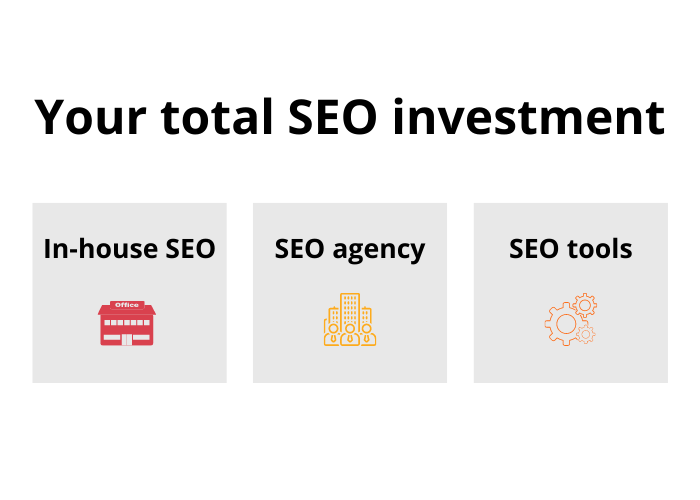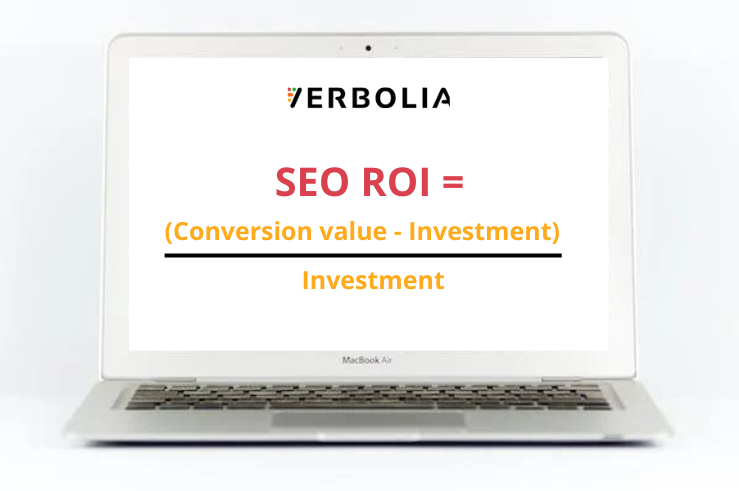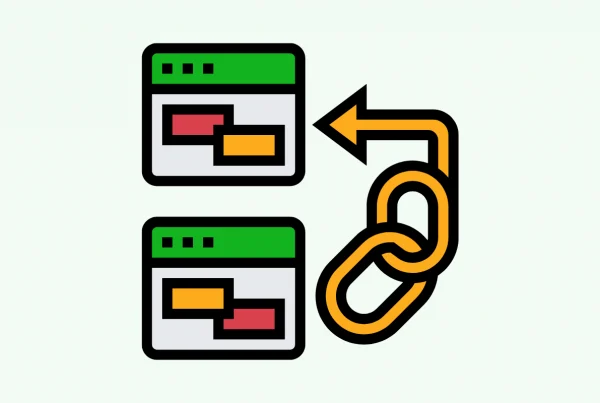Blog article
How to calculate SEO ROI on your ecommerce
Estimated reading time: 7 minutes

Did you know that about 53% of all website traffic is organic?
With so much organic traffic, it’s helpful to know what kinds of financial results your SEO efforts (or lack thereof) are driving.
Conversions and sales are of obvious importance in measuring if that traffic is worth anything to you.
However, these two metrics may not be enough. In fact, they’re only half of the puzzle. If you bring in $1 million in organic traffic sales but spend $999,000 on SEO, you’ve got only $1,000 in profits (paid traffic might be more effective in this case).
Thus, your SEO’s ROI may be the most important KPI to measure.
A higher SEO ROI demonstrates you’re getting more money for each customer that comes in through search rankings. You can use your SEO ROI to determine which SEO measures are doing the best so you can double down on those.
Unfortunately, calculating SEO ROI comes with some challenges.
SEO ROI’s challenges
With paid traffic, it’s easy to calculate ROI. You see how much you spend and how much that paid traffic generates. Add your paid traffic with the cost of working with your digital agency (or maintaining an in-house team, if that’s what you do), divide revenue by it, and you’ve got an ROI.
SEO, on the other hand, is a little tougher. You can’t nail down a precise cost per a specific action, such as a cost per click or cost per view.
Additionally, SEO is a continuous process. It doesn’t necessarily have a defined length of time like paid campaigns.
To help you out, we’ve put together this quick and easy three-step guide on how to measure your SEO ROI.
How to calculate SEO ROI in three steps
1. Calculate your total SEO investment
The first component of SEO ROI is that last letter—your investment. To calculate this, you need to sum up the cost of every SEO channel you use.

In-house SEO
If you have dedicated SEO staff whose sole duties are SEO-related, your in-house SEO investment is easy to calculate.
However, you may have people whose roles only partly involve SEO, such as a copywriter or digital marketing specialist.
If this is the case, find out how much time your in-house team spends on SEO. You can then divide your team’s total cost by that number to arrive at approximately how much money you spend on in-house SEO.
SEO agency
The cost of an SEO agency investment is much easier to calculate. That said, SEO agencies may run on several different payment models.
If you engage in a one-off project with an agency, the total cost is your investment.
Similarly, if you work with an SEO agency on a retainer basis (a fixed monthly fee), your monthly fee is the investment number.
SEO tools
SEO tool investment is relatively easy to calculate, too, whether it’s a one-time payment or a monthly/yearly fee.
Add these costs together (if applicable), and you’ll arrive at your total SEO investment.
Next, see what kinds of revenues and sales this investment is bringing you.
2. Track your conversions
The other half of the equation is the money you’re making. You can figure this out by tracking your conversions.
One of the simplest ways to do this—if you want to avoid investing in complex software—is to use Google Analytics. Google walks you through the process of setting up Analytics in this instructional article.
After that, you’ll have to set up eCommerce tracking on Analytics. Again, Google helps you out with this article.
Once you set these up, you can view your overall conversion rate and other data. This is incredibly useful whether or not you’re calculating SEO ROI, so it’s wise to set it up as soon as possible.
Give it about a month to let the data flow in. Then, you can check out your conversions by channel by navigating to Conversions > Multi-Channel Funnels > Assisted Conversions.
Click “Conversions” at the top of the page, and it’ll break down your total traffic data by channel, one of them being organic traffic. You can filter based on any time frame you like.
Simply grab that revenue number for your organic traffic to perform the final SEO ROI calculation.
3. Calculate your SEO ROI
Finally, it’s time to calculate your SEO ROI.
Here’s a simple formula to do it:
(conversion value – investment) / investment

Don’t focus on search volume
When performing keyword research, don’t target a keyword simply because it has a high search volume. You have to look at the monthly search visits to see if it’s worth your time and money.
Using the example above, there’s no use ranking at the top of Google for the keyword “George Clooney age” if most people don’t click on the search results.
Instead, when conducting keyword research, look at search volume and website visits alongside other stats you’re already looking at, like keyword difficulty. If a specific keyword has a big difference between search volume and search visits, it might not be worth your time.
You want to rank for keywords that have a high possibility of users clicking through the search results.
Create long-form content
Long-form content can’t be summarized within two or three sentences. So when you focus on deep articles, it increases the likelihood of readers clicking on your website.
For example, if you’re selling coffee online, instead of writing an article covering the top five coffee machines, write a deep post that covers everything a reader needs to know when looking for a good coffee machine.
It’s almost impossible for Google to summarize all of this information within a few sentences.
With long-form content, visitors are also likely to stay on your page for longer as they read your article, increasing the average reading time and improving SEO rankings.
For example, say you invest $20,000 into SEO efforts that generated $80,000 in sales.
Using our formula:
($80,000-$20,000)/$20,000 = 3
This means you obtained a 300% SEO ROI. Put another way: You earned $3 in sales for every $1 you put toward SEO efforts.
Get more traffic and conversions with Verbolia
As you’ve seen, you can boost ROI by either improving your conversation rate at the same SEO spend or decreasing your SEO investment while maintaining your conversion rate.
But what if you could do both?
Verbolia can help. Simply feed Verbolia the right keywords, and it produces fast, clean, and attractive landing pages fully optimized for those keywords. You’ll see more traffic and conversions, all without investing untold thousands into in-house services or an agency.
Have a look to our case studies to check out how we helped various ecommerce businesses using our highly optimized landing pages.
About The Author
How can Verbolia help your e-commerce platform.


